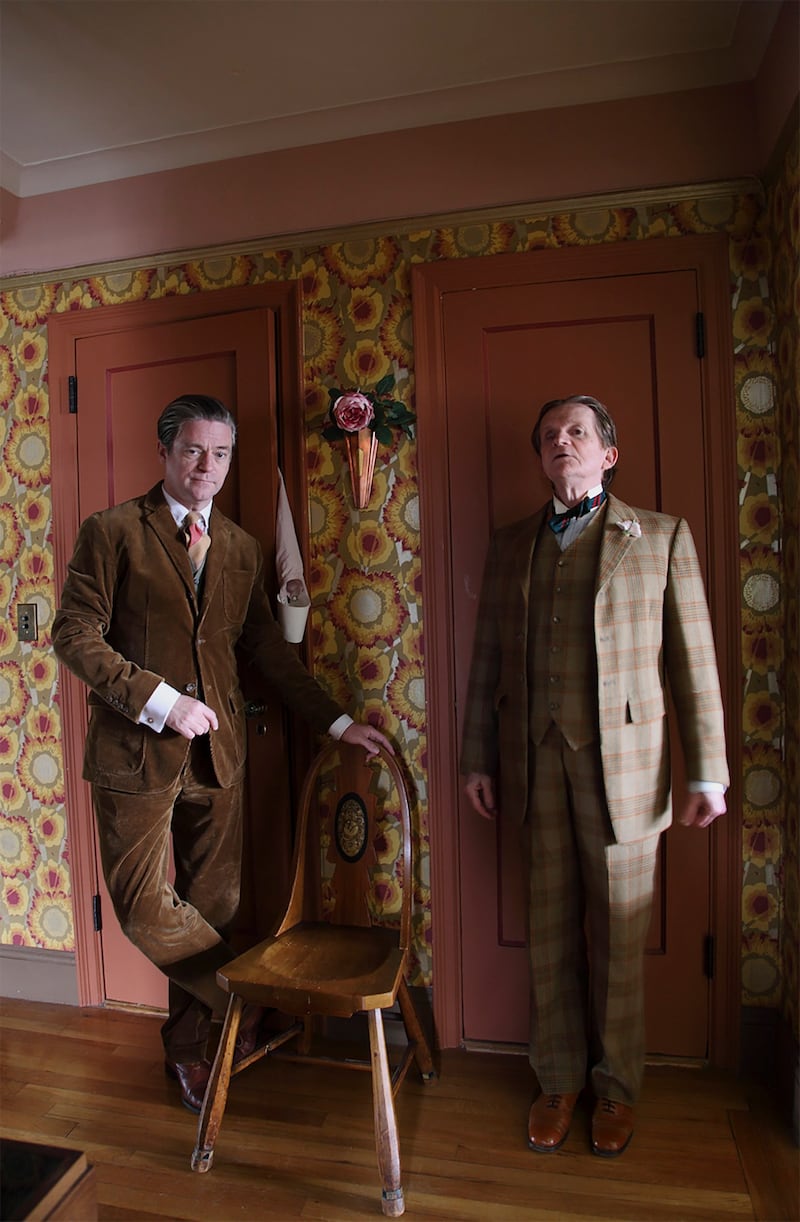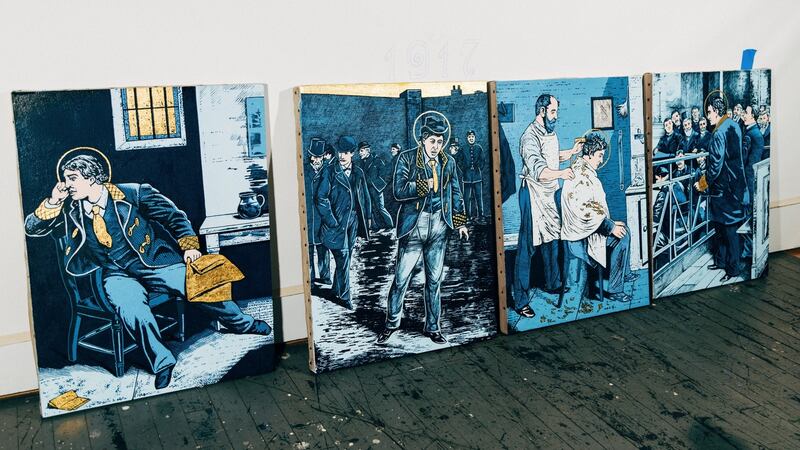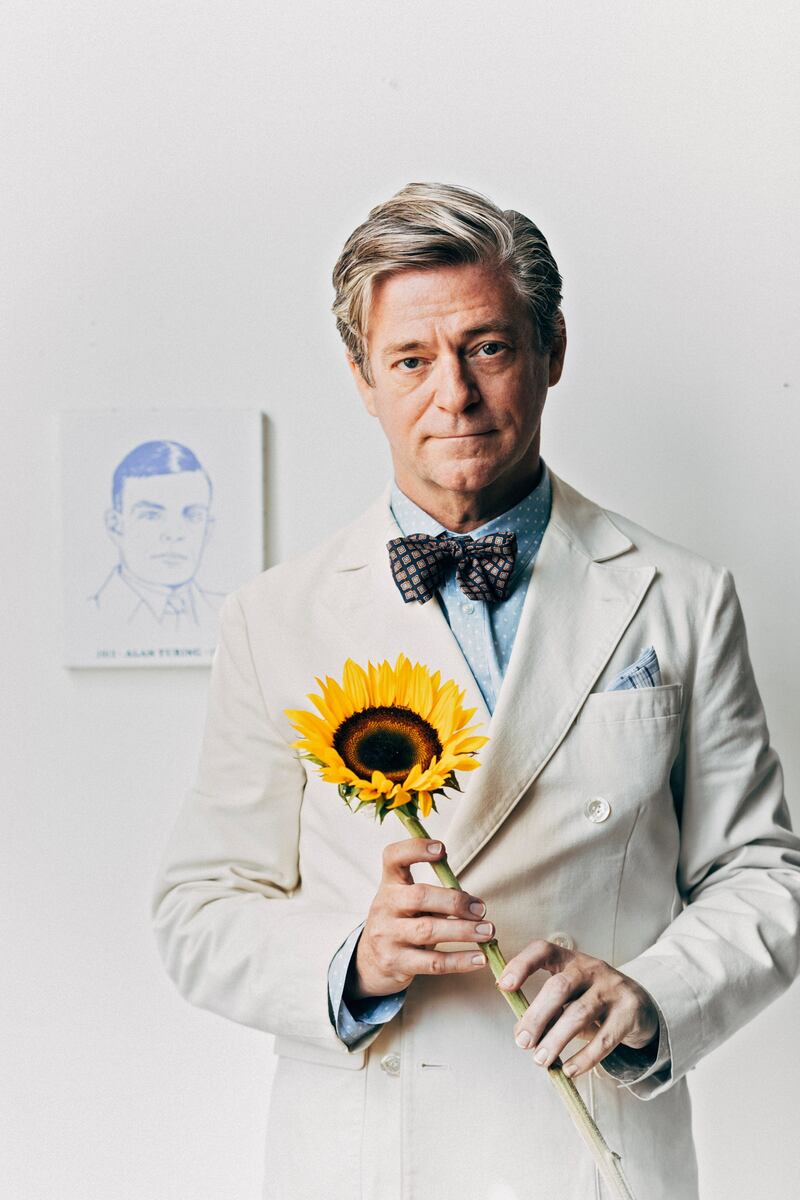Oscar Wilde’s immense talent, foppish style and personal tribulations as a gay man make him a natural subject for the artistic duo known as McDermott & McGough, who have created a new "shrine" to the writer which has just opened in New York.
The temple, which has taken over the Russell Chapel at the Methodist Church of the Village on 13th Street in Manhattan, is an Aesthetic Movement-style shrine with paintings, sculptures and rows of chairs for worshippers amid faux-painted columns meant to resemble crumbling stone.
It is available for weddings and other ceremonies, with proceeds going to the youth and family programmes at the church’s neighbour across the street, the Lesbian, Gay, Bisexual and Transgender Community Centre. The centre collaborated on the project with the Church of the Village, and it was organised by independent curator Alison Gingeras.
David McDermott and Peter McGough rose to art-world fame in the US the 1980s as boyfriends. They made subversive, queer-themed paintings, and their photographs, created in antique styles, with painstaking precision, depicted them as dandies of a bygone era. That work won them several Whitney Biennial appearances and financial success.
But it all fell apart in the 1990s. They split up as a couple and lost their homes in a tax-related debacle. McGough nearly died of complications from Aids. McDermott renounced his US citizenship and exiled himself to Ireland, where he still lives in his eclectic country mansion in Co Monaghan, facing health issues of his own.

Their new project, the Oscar Wilde Temple, may be an attempt to solidify the third-act comeback that Wilde, who died penniless in Paris in 1900, at the age of 46, never got.
In his Bushwick studio last month, McGough (59) excitedly showed off the temple components. “I always loved Oscar Wilde because he was a complete fop,” he said. “He’s the deity of the religion.”
McGough, robustly healthy these days and dressed in a natty cream-coloured suit on a humid afternoon, was surrounded by eight gold-and-blue Reading Gaol paintings, named for the prison where Wilde did hard labour after being convicted of sodomy and "gross indecency". They depict Wilde undergoing the Stations of the Cross, complete with gilded halo, in the style of a Victorian police gazette. In front of McGough was a smooth, 4ft-tall wooden sculpture of Wilde, the show's centerpiece.
Also on view are six "martyr paintings" depicting more recently persecuted figures, including Brandon Teena, Harvey Milk and Alan Turing, and a side chapel dedicated to Aids, with devotional candles and a mystical-looking painting called Advent Infinite Divine Spirit. The pulpit is an overturned soapbox.
The two artists have been talking about such a project for more than 20 years. “The idea has evolved and changed,” McDermott (65) wrote in an email from Dublin. He added that for him, summoning Wilde represented a return to “civilisation” after a 100-year decline.
Despite their ups and downs, the former couple still collaborate, and have shuttled back and forth between Ireland, England (where they are setting up a studio) and New York, where they are represented by the Chelsea gallery Cheim & Read.
Alhough McGough was the more hands-on partner for the temple – McDermott has had trouble getting permission to re-enter the US, and was not going to attend the temple opening – they consider it a McDermott & McGough, just like their previous works.

They found a savvy advocate for the project in Gingeras, who has held positions at the Guggenheim Museum and Fraçois Pinault’s Palazzo Grassi in Venice. “I’ve had a long-standing fascination from afar with these artists,” Gingeras said. “They are so out there, I wanted to know more.”
McGough met Gingeras at a party, and soon after they were off and running, with help from movie producer Dorothy Berwin, a supporter of the community centre and one of the underwriters of the project. The Oscar Wilde Temple will travel to London's Studio Voltaire in the autumn of next year.
Gingeras also curated a retrospective show of their work, McDermott & McGough: I've Seen the Future and I'm Not Going, whichis on view at Dallas Contemporary from September 29th to December 17th.
Though the Church of the Village has never attempted an art show on this scale, the lead pastor there, the Rev Jeff Wells, said the temple was a natural fit because of the church’s significant LGBT membership.
“We thought it was a terrific idea to honor Oscar Wilde and other martyrs of the liberation movement,” Wells said. “Plus, it’s not bad publicity for the church.”
Glennda Testone, executive director of the community centre, said that art was a keystone there, back to the first Center Show in 1989 and the Keith Haring-decorated second-floor bathroom. "The thing that resonated with us is that Wilde was unapologetic about who he was," Testone said. "Our youth today are just so fierce. They say, 'This is who I am and I'm going to fight'."

As he prepared the project, McGough, who is writing his memoirs for Random House, was fairly open to reminiscing about his stormy decades with McDermott. When the artists first encountered each other, around 1980, “I thought David was the most interesting person that I had ever met,” said McGough, whose strength was as a maker, particularly in paint. But he attributed much of their success to McDermott’s commitment to the concept of a “time experiment” that essentially turned their lives into performance art.
In his email, McDermott said that he had spent the past three years on "the most extensive time experiment of my life", converting a 30-room country house in Co Monaghan to reflect the evolution of decorative styles over previous centuries, and to make sure any forward movement of the clock is suspended.
Although McGough noted that they moved from “skyrocketing to fame” to “losing everything” (their trials included a “Bosie” who came between them, he said, referring to Wilde’s young lover), their careers are stable now.
Gingeras shared her own perspective. “I hope,” she said, “this is a revindication for them.”
[ churchofthevillage.org Opens in new window ]
© 2017 New York Times News Service
















